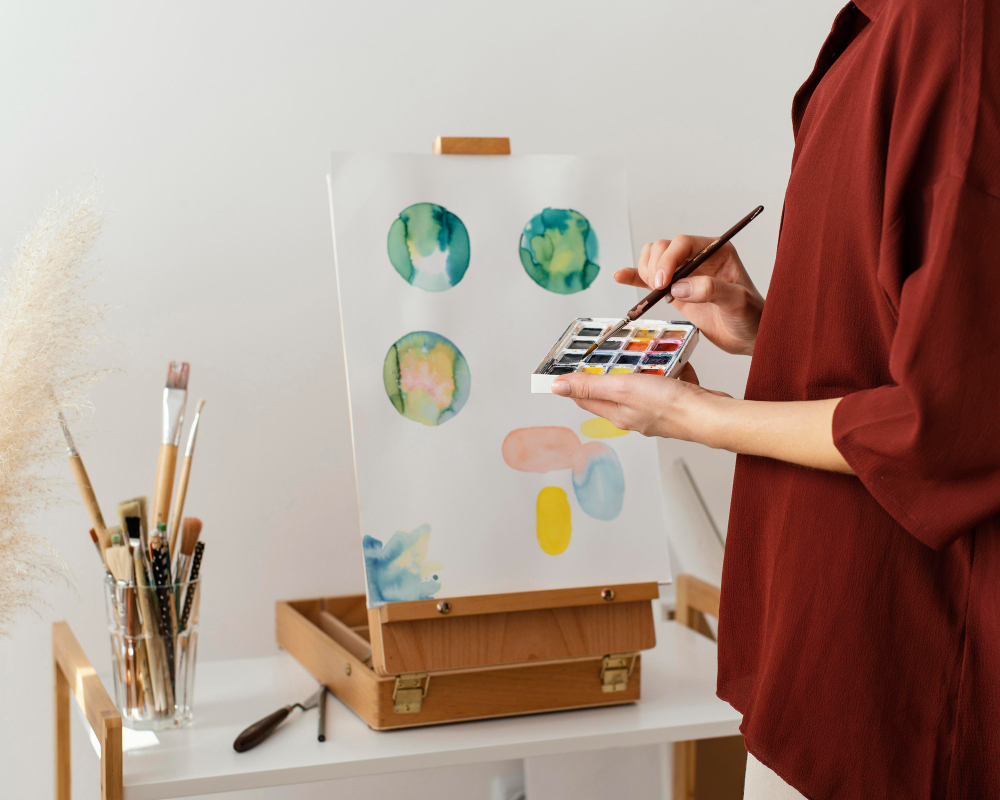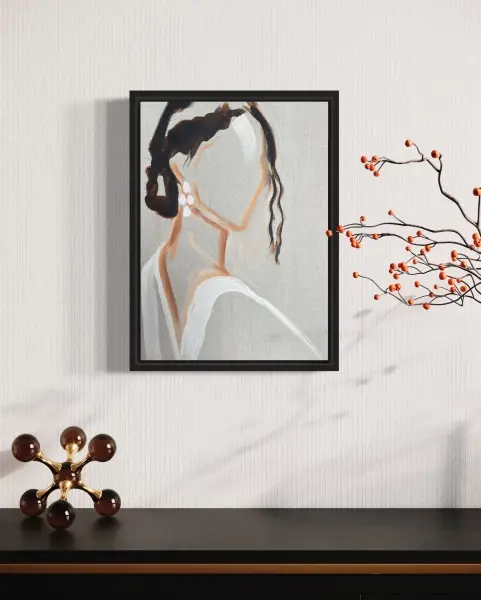The Power of Colour in Matching Paintings with Room Decor
Before we delve into the world of paintings, it’s essential to understand the significance of colour in interior design. Colours evoke emotions, set moods, and define spaces. When choosing paintings, the colour palette can enhance or disrupt your room’s visual harmony. Matching paintings with room decor is crucial in maintaining harmony, ensuring that the artworks not only complement but also enhance your space’s existing colours and styles. This careful consideration can transform your room into a cohesive and visually appealing environment.
The art of interior design goes beyond mere aesthetics; it’s about creating an atmosphere that resonates with your personality and complements your living space. A pivotal element in achieving this balance is matching paintings with room decor, ensuring the artwork harmonises with your colour scheme. By carefully selecting paintings that blend seamlessly with your decor, you can create a cohesive, inviting environment that feels like home.
How to Match Paintings to Your Room’s Dominant Colour
In every room, one dominant colour is often found in furniture or decor elements. Identify this colour; it will guide your choice of painting. Matching paintings with room decor is key to creating a cohesive and harmonious space. By aligning the hues and themes of your paintings with your room’s dominant colour and style, you ensure seamless integration of art into your living environment, enhancing both its aesthetic and atmosphere.
Choosing Complementary vs. Analogous Colour Schemes for Art

1. Complementary Colours
Explore the colour wheel to discover complementary shades. These colours opposite each other on the wheel create a visually striking contrast. Matching paintings with room decor involves selecting a painting featuring complementary colours that can be a focal point in a room dominated by a single hue. This strategy ensures that the artwork not only enhances the beauty of the space but also seamlessly integrates with the existing decor, creating a harmonious and aesthetically pleasing environment.
2. Analogous Colours
Analogous colours, which are adjacent on the colour wheel, create a sense of harmony and unity. You can provide a soothing and cohesive look by matching paintings with room decor, especially by choosing artworks that incorporate analogous colours to your room’s dominant hue. This strategy not only enhances the visual appeal of your space but also ensures that the art seamlessly integrates with the overall decor, amplifying the room’s ambience and aesthetic coherence.

3. Monochromatic Tones
For a sophisticated and unified appearance, opt for paintings that use varying shades of your room’s dominant colour. This monochromatic approach adds depth without overwhelming the senses.
4. Bold Contrasts
Consider bold and vibrant paintings to add energy and personality to your room if they feature a neutral palette. A vivid artwork can be a conversation starter and a statement piece.

5. Consider the Artwork’s Emotional Impact
Beyond colour, consider the emotional impact of the artwork. Does it convey the desired mood for the room? A serene landscape may be ideal for a bedroom, while abstract art can infuse vitality into a living area.
Balancing Scale, Placement, and Style with Artwork
Creating a balanced composition involves more than colour; it’s also about the size, placement, and style of your paintings:
1. Scale Matters
Match the scale of your paintings to the room’s proportions. A large painting can dominate a small space, while small pieces may get lost in a big room.


2. Artwork Placement
Consider eye level when hanging paintings. The artwork’s centre should typically be at eye level, around 57-60 inches from the floor. However, artistic experimentation with placement can sometimes create visually appealing effects.
3. Mixing Styles
Eclecticism in artwork styles can create a dynamic and engaging atmosphere. Combining contemporary art with traditional decor can create a visually stimulating blend.
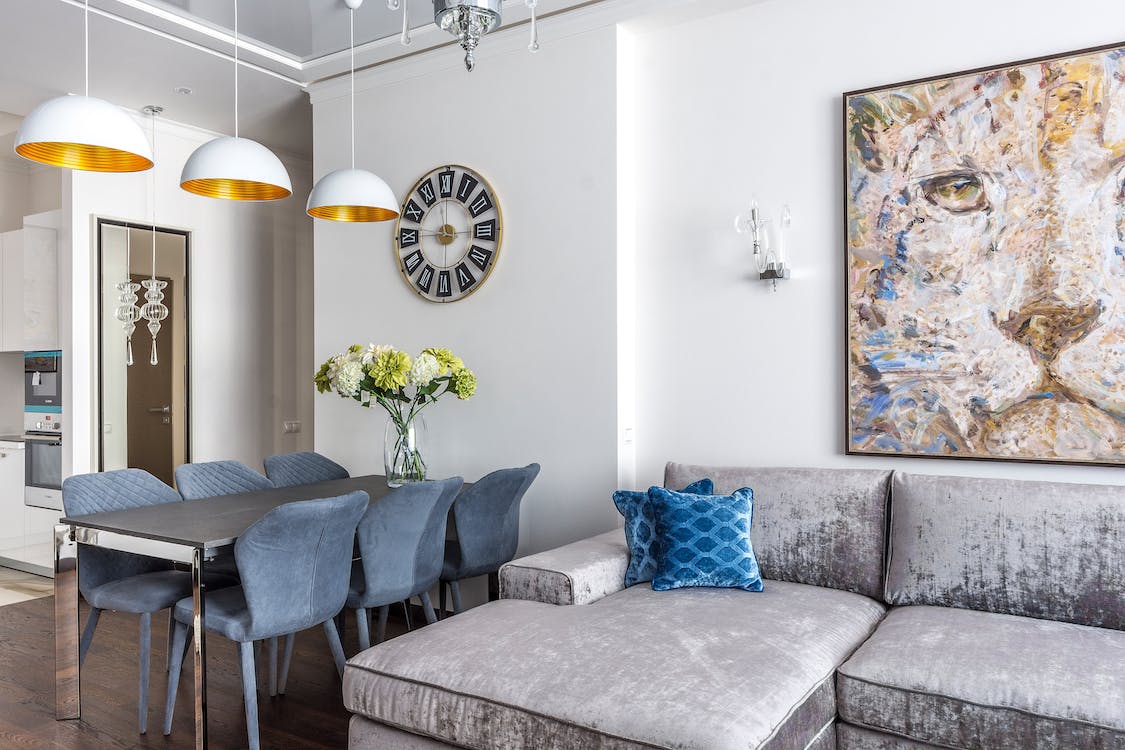
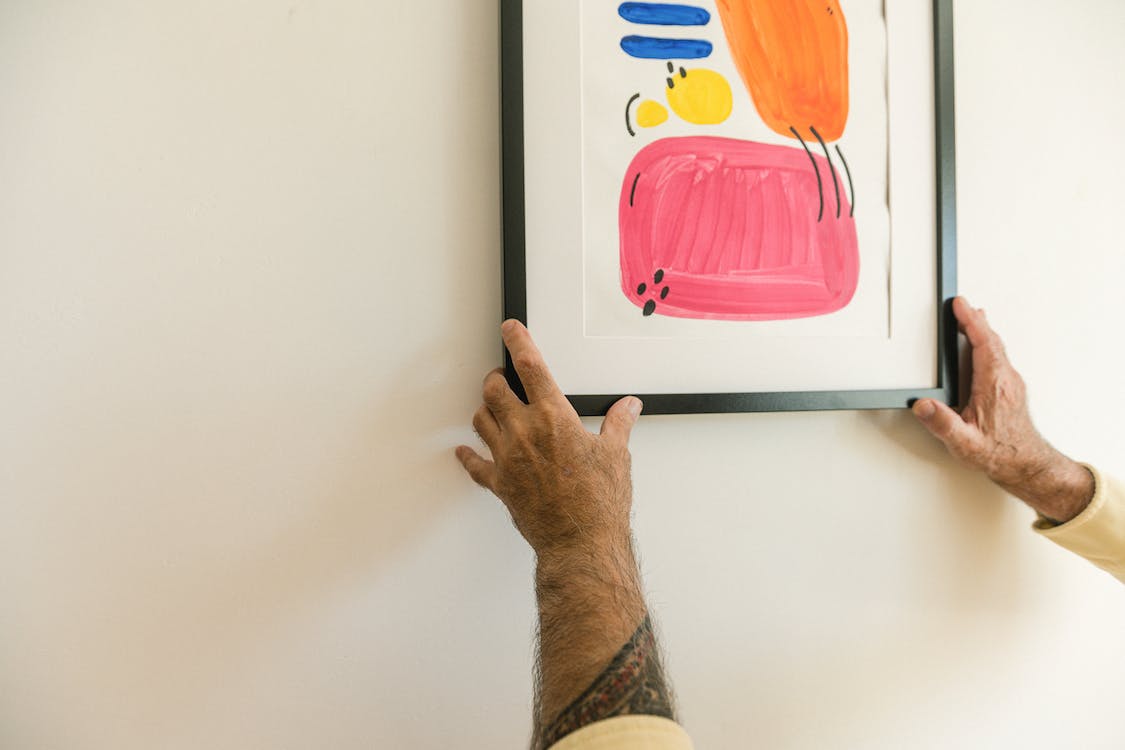
4. Framing Unification
Choose frames that complement your room’s decor. Frames can tie the artwork to its surroundings or serve as a statement piece in their own right.
5. Grouping Art
Create a gallery wall by grouping paintings of various sizes and styles to create a visually appealing display. This arrangement can be an artful showcase and a focal point within the room.
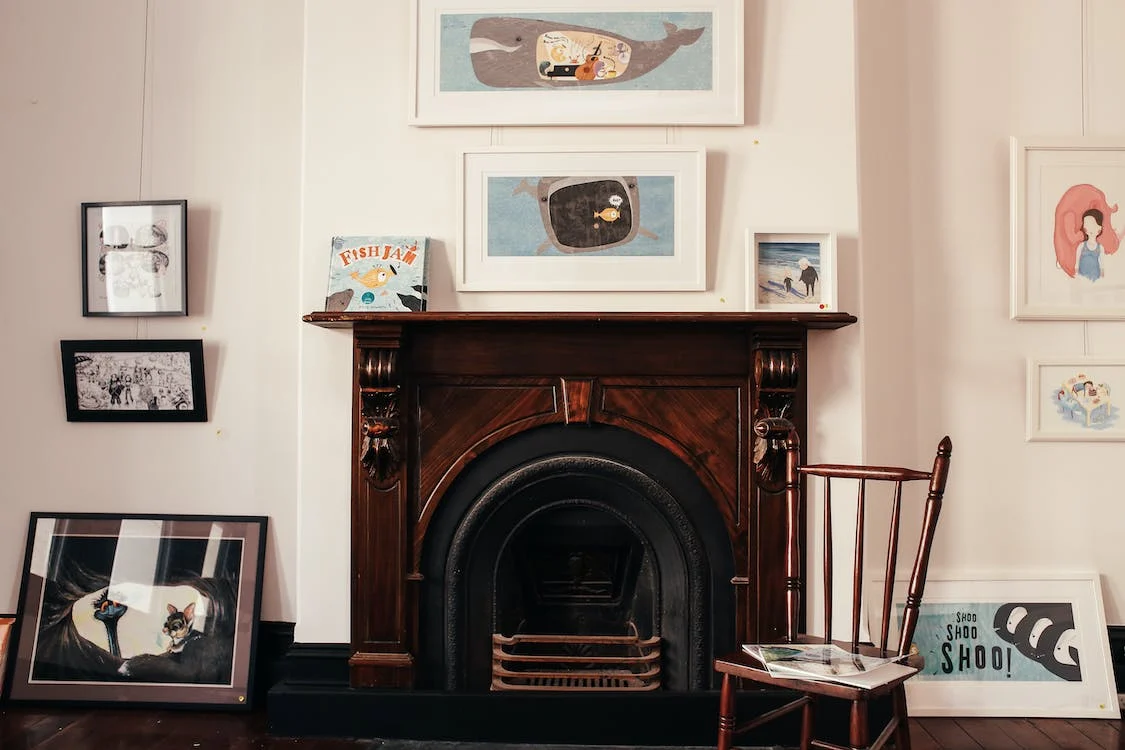
Personalising Your Space Through Art
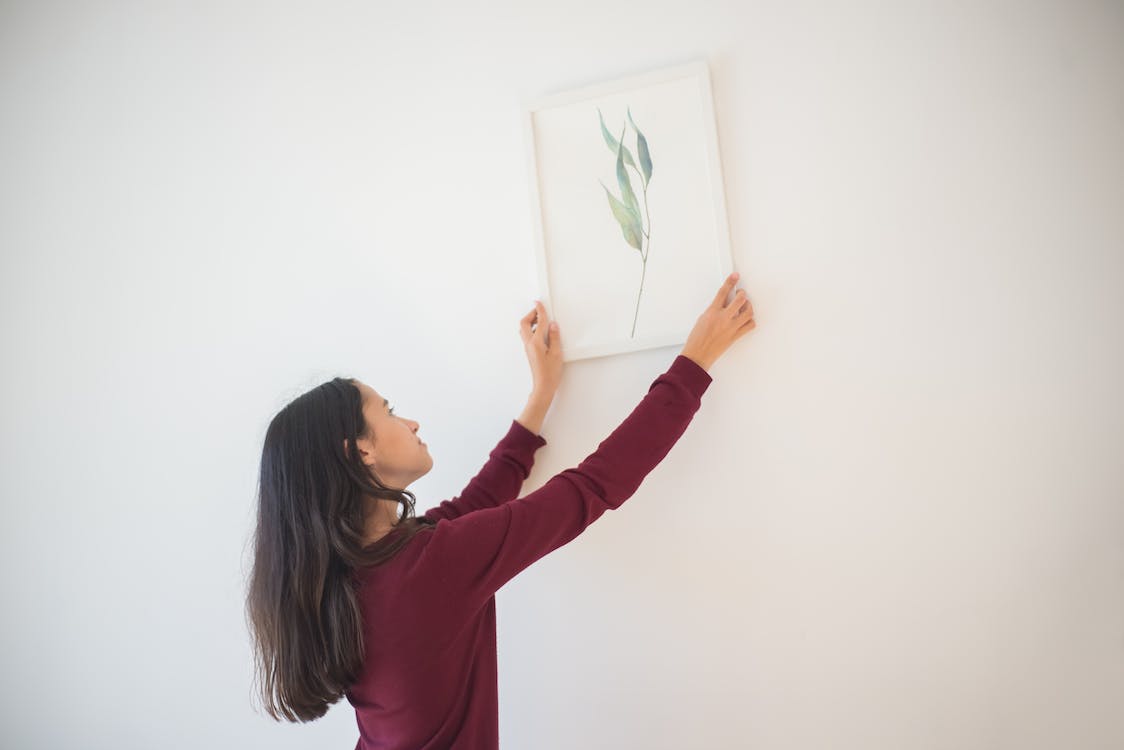
Ultimately, the choice of paintings should reflect your style and preferences. Your home is an extension of yourself; your chosen art should resonate with you emotionally. The key lies in balancing your artistic expression and the room’s ambience.
Remember that artwork is an investment in your daily environment—choose pieces that will continue to inspire and delight you over time. As your tastes evolve and your decor changes, don’t be afraid to rotate artwork to different rooms or reframe pieces to give them new life.
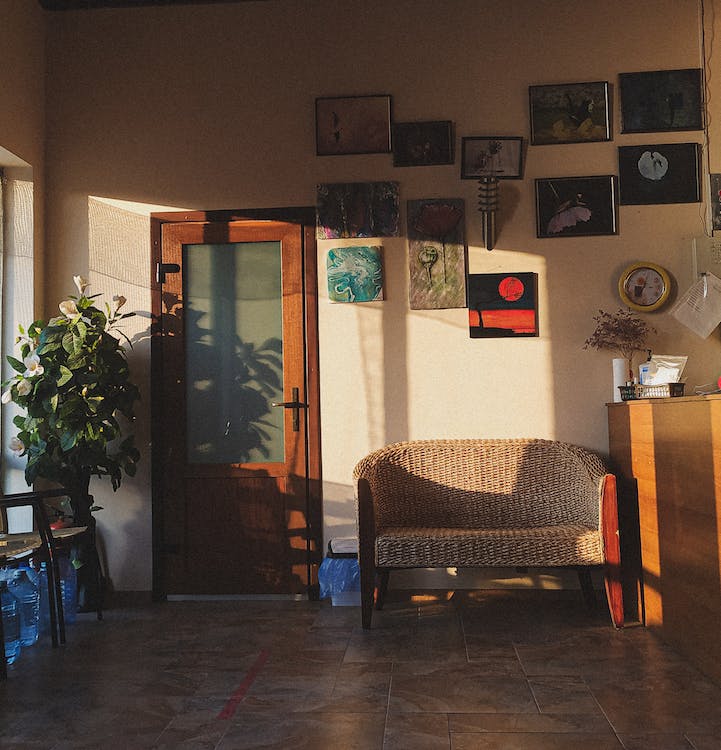
Conclusion
The art of matching paintings with room decor is a delicate balance between science and intuition. Understanding colour theory and colour psychology provides a foundation, but your connection to the artwork makes your space unique and authentic. When selecting art for your home, consider how it complements your colour scheme and how it makes you feel when you enter the room.
Whether you’re an art connoisseur or just beginning to build your collection, the principles outlined in this guide will help you create spaces that reflect your personality while maintaining design integrity. Trust your instincts, experiment fearlessly, and watch your rooms transform into personalised galleries that celebrate your taste in art and design sensibility.
Frequently Asked Questions
Don’t stress about perfect matching. Look for artwork that contains at least one colour that complements your room’s palette. Sometimes, contrast and juxtaposition can create more visual interest than perfect harmony.
Focus on artwork that incorporates several of the colours in your room. Alternatively, select neutral art with subtle colour accents that won’t compete with your existing decor.
It depends on your goal. Match the frame to the artwork if you want the piece to stand out. Match it to your room decor if you want the art to blend seamlessly with your interior design.
This depends on the size of your space and the impact you want to create. A single large piece can make a bold statement, while a collection of smaller works can tell a more complex story. The key is to avoid overcrowding and maintain visual balance.
Absolutely! Mixing styles can create visual interest and reflect a curated, collected-over-time feel. To create cohesion, the key is maintaining a common element—colour palette, subject matter, or frame style.
Consider artwork with clean lines and a limited colour palette for minimalist spaces. Abstract pieces or black and white photography often work well in minimalist environments, as they do not disrupt the aesthetic.

